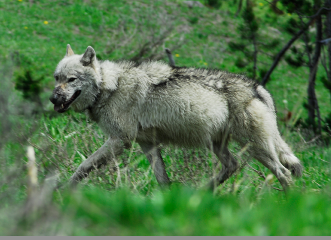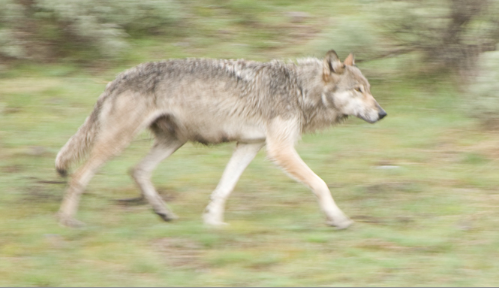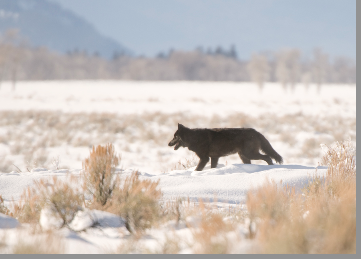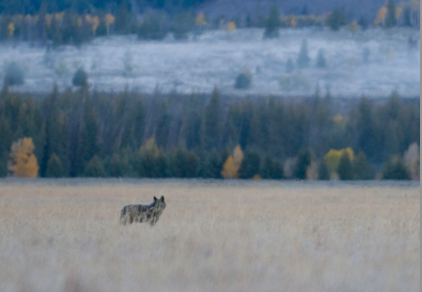During a recent winter wildlife safari to Grand Teton and Yellowstone I saw bison galloping across a path directly in front of me, elk, big horned sheep, bald eagles, coyotes and a fox. I didn't have enough time to get to Lamar Valley, so much to my chagrin, I didn't see a wolf.

Photos Courtesy of Wild Things of Wyoming
The reintroduction of the grey wolf into the ecosystem in Yellowstone in 1995 and 1996 is one of the most contentious issues in Wyoming. By the mid 1930s, every wolf in the ecosystem had been killed, trapped, poisoned or removed.
"That was something condoned by biologists and naturalists like me because we saw deer and elk as a good thing for the ecosystem, so therefore, wolves must be bad," said my guide Kurt Johnson.

"Ecologically, what happened is that between the 1930s and the 1990s, without the presence of the top predator, things got off kilter," Johnson added. "Elk became complacent and less healthy. And we then had too many, so the solution was to start an elk management program, an elk harvest to remove the elk. Since we altered the ecosystem a little bit, we started having to alter it a lot."

In the mid 1970s, there was talk about bringing back Yellowstone and the ecosystem's main predator, but it was complicated and politically charged, and it took up until 1995 for several packs of wolves to be trapped in British Columbia and Alberta and be released in northern Yellowstone.
They fed them road kill for a few weeksthen they released them. People had spent almost their entire lives working towards this moment of release. They opened the gate and the wolves wouldn't leave because they associated the main gate with humans, whom they didn't trust. The only way they could release them was to cut a small hole in the back of the fence and let the wolves think they had escaped. Can you imagine seeing a wild wolf loping along the Lamar Valley in Yellowstone, for the first time since the 1930s?"
"Yellowstone become a laboratory of what happens in the Rocky Mountains when a predator is back. We certainly saw a change in the elk. Suddenly they had to start becoming real elk and worrying about wolves. They became very cautious - in fact, they call this the Landscape of Fear because the elk could no longer hang out in drainages or rivers; they had to be out in the open. For 60 years, coyotes had became literally the top dog. When the real top dog returned, half of the Yellowstone coyote population decreased."

"The purpose of the reintroduction was to get wolves to a normal population and then to de-list them, which means giving the state the power and responsibility to manage wolves. We're on the cusp of Wyoming gaining control and management of the wolves. but in this prehistoric plan, wolves outside of Yellowstone and Grand Teton will be able to be hunted or trapped, anytime anywhere - no tag no permit, no season. It's one of these issues where you don't find anyone who's indifferent. You have to think like a biologist, you have to think like a wolf, and you have to think like a rancher to find the answer. I struggle with people who say the wolves have no place; but I also have trouble with conservationists who say wolves should be able to go wherever they want because that's ignoring the needs of the ranchers. The answer somehow lies in the middle of all these different attitudes and philosophies about this important predator."
I certainly don't know the answer, but I do know that there's a summer Yellowstone wildlife safari. Next time, they'll be no crying wolf. I plan to see the real deal.